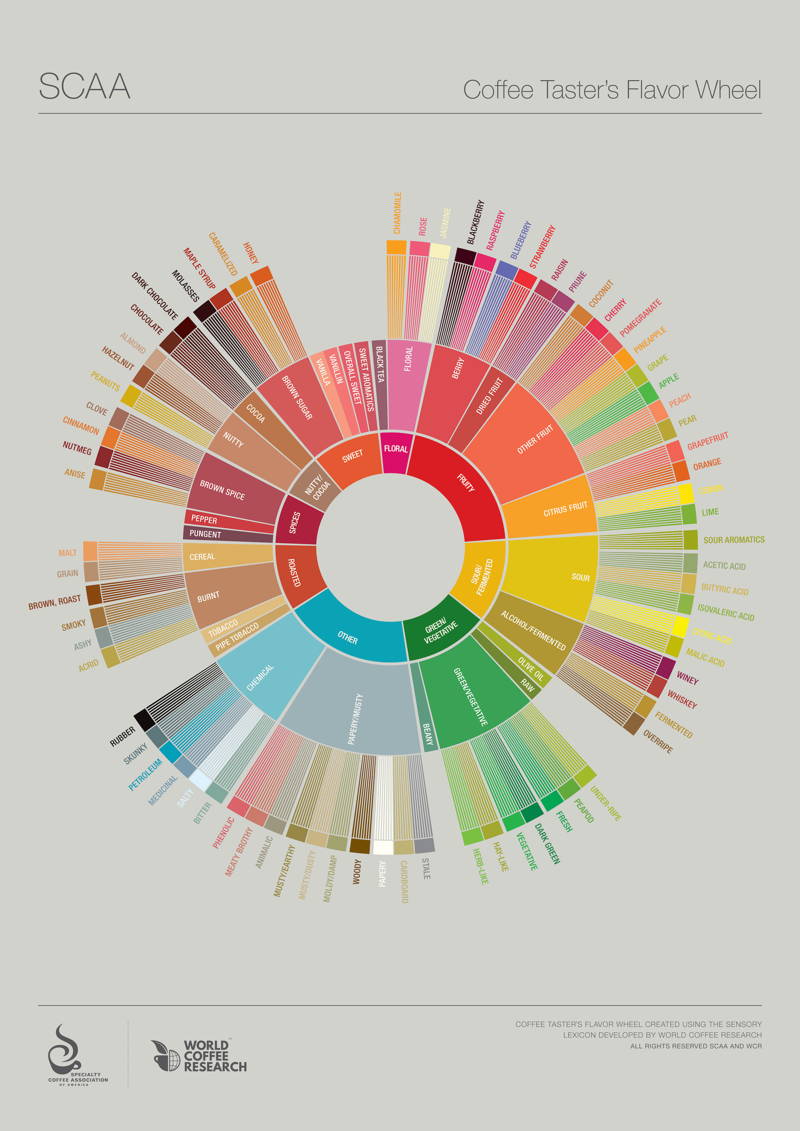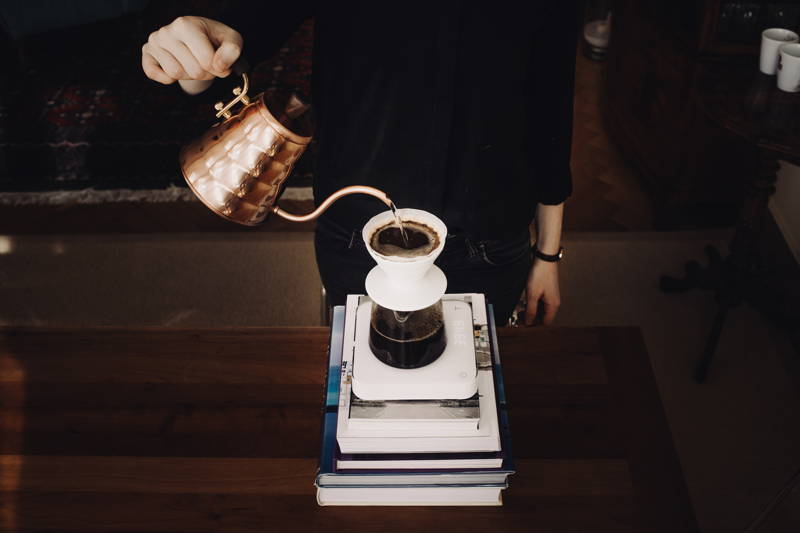

A contribution from Maximilian Schmitt in the category #Coffee Knowledge from 17 August 2020
What are the differences between coffee and espresso? How do you prepare filter coffee and espresso and what is the roasting process? Which drink has more caffeine? We get to the bottom of these questions!
First things first: Espresso and filter coffee are sourced from the same plant so they share the same origin.
You only got a minute? We’ll briefly show you the differences:
- The roast makes the difference! Espresso beans are usually roasted darker than beans for filter coffee.
- Espresso is obtained with an espresso machine at a brewing pressure of 6 to 9 bar in 25 to 30 seconds. Filter coffee is brewed in 2 to 6 minutes, depending on how it is prepared, and then filtered.
- A simple espresso consists of only 20 – 25 ml and has a crema, while filter coffee is usually served in larger cups, is clear and has no crema.
Here we go! Now the differences more detailed:
Preparation
Espresso is made with an espresso machine
In the preparation of an espresso coffee a significantly finer grinding degree is required compared to the coffee. The short processing time of 25 to 35 seconds makes it easier to extract the coffee – and only in this way can the required brewing pressure of 6 to 9 bar be built up. For a single espresso, 7 to 9 grams of coffee powder are usually filled into a sieve carrier, for a double 12 to 20 grams of coffee powder. Depending on how much ground coffee is used, 20 to 50 millilitres of espresso are drawn. The water temperature for espresso is 90 to 96 °C and varies depending on the type of coffee and personal taste.
Filter coffee is brewed slowly
Since the preparation varieties for filter coffee are almost unlimited, there is no strictly standardized brewing process. One of the most important differences in the preparation of filter coffee and espresso is the degree of grinding. For filter coffee, the beans are ground much more coarsely than for espresso. The coffee powder is then placed in a previously rinsed paper filter and gradually brewed with hot water – the so-called „Pour Over“ process. Alternatively, the coffee is placed in a container such as a French Press, filled with hot water, stirred and left to steep for several minutes – the so-called „Full Immersion“ process. When preparing filter coffee, the water is heated to 88 to 96 °C, depending on the type of coffee and personal taste.
Our tasting packs for coffee and espresso
Appearance and taste
Espresso can be recognized by the typical crema
The crema is a fine layer of foam that is created during the extraction of the coffee under high pressure of the espresso machine. The CO2 contained in the coffee bean escapes and settles with fats and suspended matter as a brown layer on the espresso. As a rule, a single espresso is served in a cup of about 50 ml and a double espresso in a cappuccino cup of about 150 ml. An espresso has a very concentrated and intense taste due to the small amount of water. In an espresso, just under 10 % of coffee is dissolved in water, making it much more viscous than filter coffee.
A filter coffee tastes more nuanced and lighter
Compared to espresso, filter coffee is much more transparent in the cup. It is also recognizable by its less viscous consistency, with only just under 2 % coffee dissolved in water. It is prepared with little or no pressure and therefore has no crema. Its aroma is complex, subtle and much more differentiated than that of an espresso. Filter coffee is drunk from all standard cups, mugs and glasses.
Roasting
The main difference
For a long time, the differentiation between filter coffee and espresso was clearly determined by the degree of roasting. An espresso bean was always darker than a filter coffee bean – so clearly that even an amateur could determine quite easily whether it was a bean for filter coffee or espresso.
The reason why espresso beans usually look so much darker and smoother than those for a filter coffee is that as roasting progresses, the acidity of the coffee decreases – and the roasting aromas overlay the fruity nuances. Since an espresso is much more concentrated than filter coffee, the individual taste components of the coffee, such as acids and bitter substances, also appear more strongly. Thus, over time, it had become established to prefer bitter substances – and not fruit acids – in espresso.
Boil it down – a cup of coffee has more caffeine
Contrary to popular belief, a typical espresso contains less caffeine than a cup of filter coffee. This is solely because espresso (20 – 60 ml) is consumed in smaller quantities than filter coffee (100 – 300 ml). However, if you compare the relative difference for the same amount of beverage, espresso contains more caffeine than filter coffee. It is therefore simply a matter of observation.

Old vs. new world: Do espresso roasts always have to be dark?
Only in recent years there has been a worldwide trend towards high-quality coffees, namely the third wave of the coffee movement or in short – Third Wave. These coffees are roasted more gently and brighter than conventional coffee beans. Their natural taste nuances may remind you of strawberry or citrus fruit, for example.
Thanks to the light roasts, espresso and filter coffee beans can no longer be distinguished by their appearance alone. Some roasting companies even no longer differentiate their coffee beans at all between espresso and filter roasting because they are convinced that there is a certain degree of roasting that is ideal for both methods of preparation (the so-called sweet spot). However, most coffee roasters still insist on offering different degrees of roasting for both coffee drinks.
Nowadays, there are different preferences: One part swears by strong, nutty, chocolaty filter coffees and espressos, i.e. darker roasts – and the other part tries to bring out the original taste of the coffee bean by shorter roasting times. The fruity aromas are clearly in the focus and the coffee contains noticeably more fruit acid.
Try out a medium strength espresso roast like the Cerrado from Brazil – nutty, chocolaty and fruity aromas will inspire you at the same time!


Maximilian Schmitt
Maximilian arbeitet bei uns im Marketing als Werkstudent. Am liebsten trinkt er helle Espressoröstungen und Filterkaffees aus der Aeropress. Außerdem war Max einmal Barista und muss uns deshalb in der Kaffeeküche immer mit den besten Cappuccini und Espressi versorgen.






